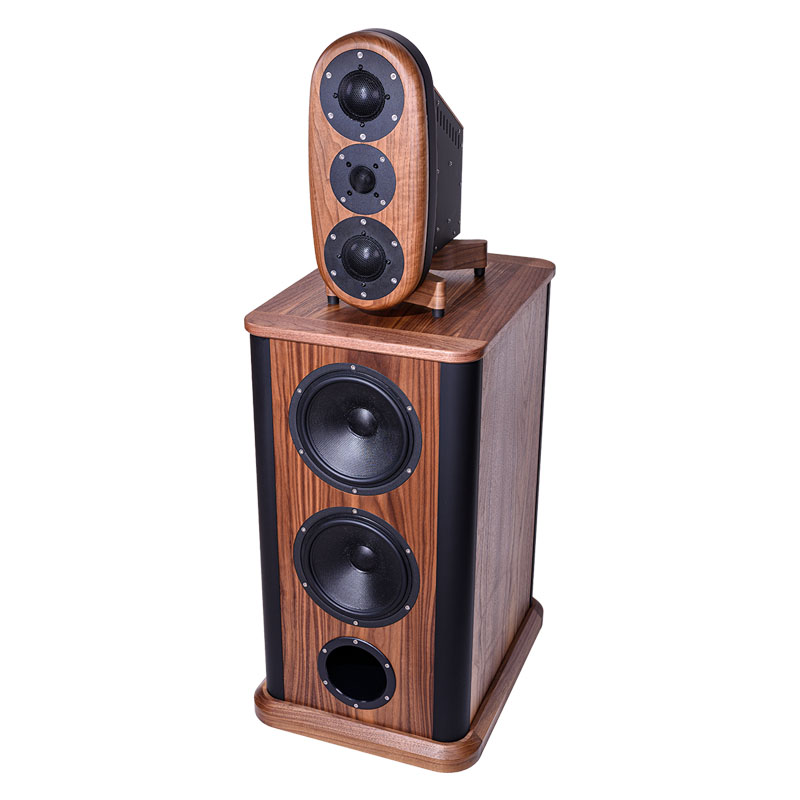ES-1 Reference
Description
The ES-1 Reference was originally designed to provide us with a no-compromise loudspeaker so that we could rigorously evaluate the performance of our amplifier designs without the uncertainties or limitations of commercially available loudspeakers.
The design intention was to provide a neutral monitor which imparts as little characteristic sound as possible, together with a wide bandwidth, superb stereo imaging and high dynamic range.
Achieving an extended bass response with minimal overhang requires a large low Q enclosure. This results in very natural sounding bass response which is especially noticeable when listening to acoustic instruments.
The requirement for a large bass enclosure does, however, contradict with the requirement for good stereo imaging because the best enclosures for imaging tend to have a small frontal area. This led to a two-box design which features a high frequency unit with small frontal area sitting on top of a large low Q bass unit.
Before deciding on the driver layout, many hours were spent listening to music with spectrum analysers and oscilloscopes attached to the system to study the power spectrum and waveforms in different genres of music.
The aim was to ensure that the chosen drivers would always stay well within their linear range to avoid compression. The selected driver configuration spreads the high-power parts of the spectrum across multiple drivers to maximise the dynamic range and power handling.
An active configuration was chosen so that the drivers could be directly coupled to the in-built class-D power amplifiers to avoid the unwanted effects of crossover components in the high current paths.
Crossovers are achieved in DSP so that we can accurately correct and control the driver behaviours using optimal filter configurations.
Construction is far removed from conventional speaker box building.
The bass enclosure is constructed from a combination of solid walnut with walnut veneered MDF panels. This is lined with carbon fibre for a massively stiff structure which is then damped with a special 3-layer damping material.
The high frequency drivers each have their own loading cavities. These are mounted in a curved front panel machined from 30mm thick solid walnut. This is backed up by 50mm of sculpted MDF to provide a resonance free mounting completely devoid of straight edges or sharp corners which could affect imaging.
Behind the high frequency drivers are the power amplifiers and digital signal processing. These are mounted in enclosures made from machined aluminium to ensure good heat sinking. Each side has three power amplifier channels, 250W for the pair of bass drivers, 250W for the mid-range drivers and 100W for the tweeter.

